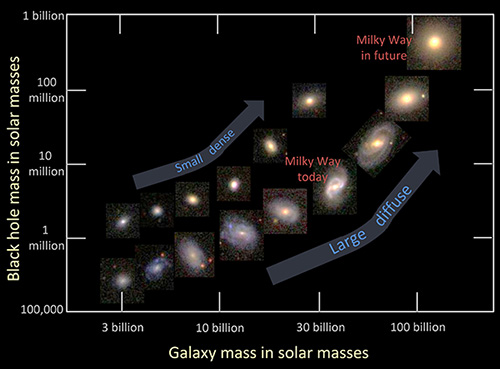
Astronomers studying galaxy evolution have long struggled to understand what causes star formation to shut down in massive ga...
Read More

Astronomers studying galaxy evolution have long struggled to understand what causes star formation to shut down in massive ga...
Read More
The irregular galaxy NGC 4485 shows all the signs of having been involved in a hit-and-run accident with a bypassing galaxy. Rather than destroying the galaxy, the chance encounter is spawning a new generation of stars, and presumably planets.
The right side of the galaxy is ablaze with star formation, shown in the plethora of young blue stars and star-incubating pinkish nebulas. The left side, however, looks intact...
Read More
One of the new dark-galaxy candidates, identified through a combination of spectral information (left) and images reflecting the emission of gas (middle) and stars (right). The position of the dark-galaxy candidate is marked by the red circle. Credit: R. A. Marino / MUSE
The identification of at least six candidates for dark galaxies could help filling an important gap in our understanding of galaxy evolution. Dark galaxies have a few (if any) stars in them and are, for that reason, notoriously difficult to detect with current instruments.
Despite substantial progress over the past half a century in understanding of how galaxies form, important open questions remain regarding how precisely the diffuse gas known as the ‘intergalactic medium’ is converted into stars...
Read More
A ‘deep learning’ algorithm trained on images from cosmological simulations is surprisingly successful at classifying real galaxies in Hubble images. Top row: High-resolution images from a computer simulation of a young galaxy going through three phases of evolution (before, during, and after the “blue nugget” phase). Middle row: The same images from the computer simulation of a young galaxy in three phases of evolution as it would appear if observed by the Hubble Space Telescope. Bottom row: Hubble Space Telescope images of distant young galaxies classified by a deep learning algorithm trained to recognize the three phases of galaxy evolution. The width of each image is approximately 100,000 light years...
Recent Comments